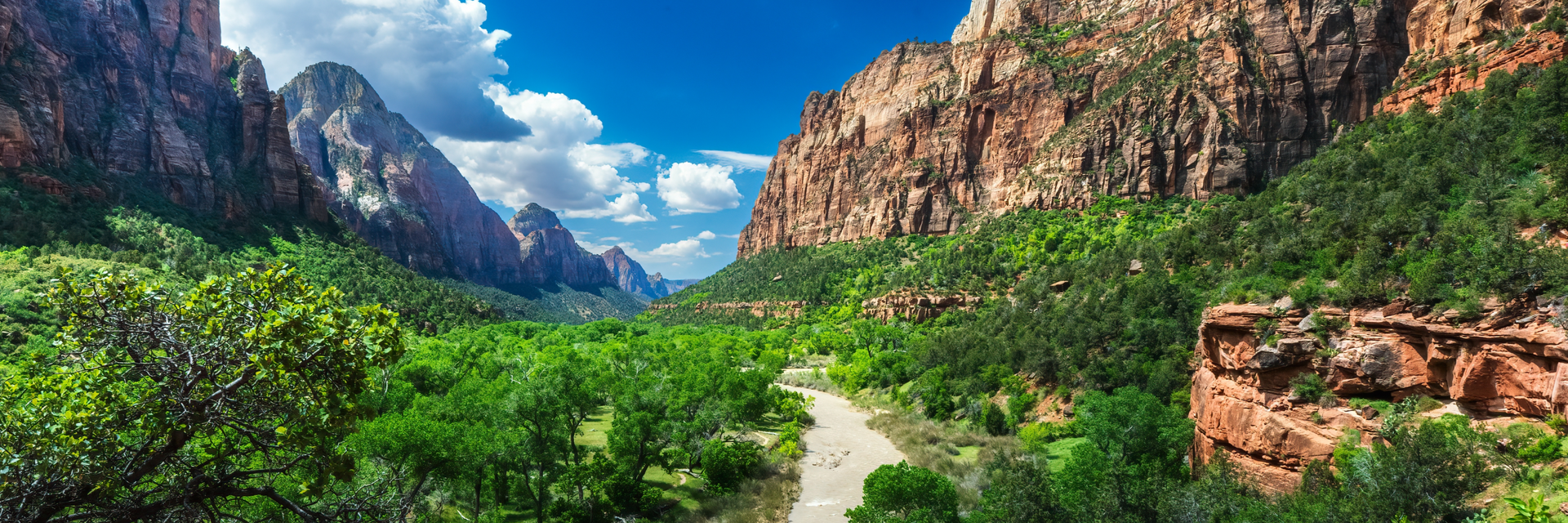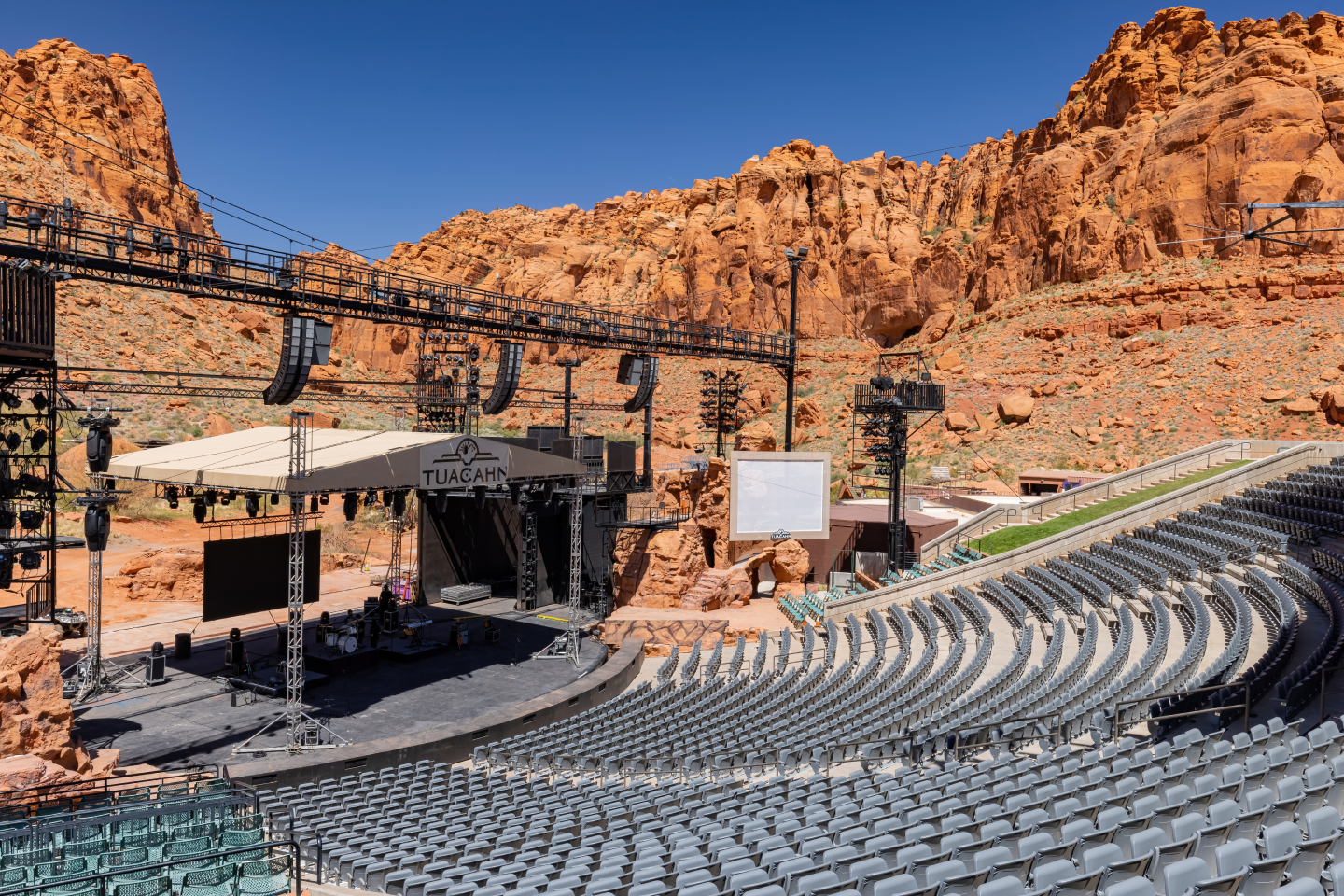Ultimate Guide to National Parks & Premier Outdoor Recreation Areas
Nestled in the heart of the American West, Utah stands as a testament to nature's artistry, boasting some of the most diverse and captivating landscapes on the continent. From the mesmerizing red rock formations of its southern deserts to the verdant valleys in the north, the state's topography is nothing short of a visual symphony. Utah's national parks, aptly dubbed the 'Mighty Five', along with its myriad outdoor recreation areas, promise travelers an unforgettable journey through geological time. Every twist and turn unveils a panorama more breathtaking than the last, revealing nature's masterpieces sculpted over eons.
But the allure of the Beehive State doesn't end with its terrestrial wonders. Just a short drive from its canyons and plateaus lie some of the nation's most enchanting waterscapes. Lakes Powell and Mead, in particular, serve as serene aquatic counterpoints to Utah's rugged landscapes. Their expansive blue waters provide both a visual respite and an invitation to myriad aquatic adventures.
In this guide, we'll embark on a comprehensive exploration of Utah's finest natural offerings. Whether you're a seasoned hiker, a photography enthusiast, or someone simply seeking solace in nature's embrace, Utah promises an odyssey of discovery, wonder, and awe. So, lace up your boots and ready your spirit – the vast expanses of Utah await!
Zion National Park
Nestled in the southwestern corner of Utah lies the magnificence of Zion National Park, a sanctuary of unique geological wonders and diverse ecosystems. Established in 1919, Zion is often heralded as a jewel of the American park system. Spanning over 229 square miles, the park's landscapes range from high plateaus to strikingly deep sandstone canyons, painted in hues of creams, pinks, and reds. The very name 'Zion' evokes a sense of the divine, and truly, the grandeur of this park is nothing short of heavenly.
Unique Features
Zion's most distinctive feature is the expansive Zion Canyon, carved over millennia by the Virgin River. The steep cliffs, some reaching elevations of 2,000 feet, are a testament to the erosive power of water, time, and geological activity. Additionally, the park houses a diverse array of plant and animal life, making it a haven for biologists and nature enthusiasts alike.
Recommended Activities & Attractions
Hiking: Zion boasts a plethora of trails suitable for all levels. The iconic Angels Landing offers intrepid hikers breathtaking views from its peak, though it's not for the faint-hearted! For a more relaxed trek, the Riverside Walk is a gentle, paved path that traces the Virgin River.
Canyoneering: For those seeking a more adventurous experience, the park offers numerous canyoneering opportunities. The Narrows, where hikers wade through the Virgin River amid towering canyon walls, stands out as a must-experience trek.
Scenic Drives: The Zion Canyon Scenic Drive is a 57-mile route offering visitors panoramic views of the park's landmarks, with pullouts for photography and contemplation.
Wildlife Viewing:
The park teems with wildlife, from mule deer and turkeys to the elusive mountain lion. Dawn and dusk are prime times for wildlife spotting.
Visitor Centers: Start your journey at the Zion Canyon Visitor Center. Here, you can gather essential information, explore exhibits, and familiarize yourself with the park's history and geology.
Zion National Park beckons with its awe-inspiring vistas and myriad activities. Whether you're scaling its peaks, wandering its valleys, or simply soaking in its natural splendor, Zion promises memories that will last a lifetime.
Bryce Canyon National Park
Just a short drive from Zion, the dramatic landscapes of Bryce Canyon National Park unfold, offering a wholly different, yet equally enchanting, visual feast. Unlike its name suggests, Bryce isn't a singular canyon but a series of natural amphitheaters etched into the eastern edge of the Paunsaugunt Plateau. The park is celebrated for its iconic hoodoos—tall, spire-like rock formations created by the interplay of freeze-thaw cycles—which give Bryce its otherworldly appearance. These vermilion, orange, and white stone pillars, set against the backdrop of a clear blue sky or a milky stretch of stars, create a mesmerizing spectacle.
Geological Wonders
Zion's most distinctive feature is the expansive Zion Canyon, carved over millennia by the Virgin River. The steep cliffs, some reaching elevations of 2,000 feet, are a testament to the erosive power of water, time, and geological activity.
Additionally, the park houses a diverse array of plant and animal life, making it a haven for biologists and nature enthusiasts alike.
Trails & Viewpoints
Sunrise and Sunset Points: As their names suggest, these adjacent viewpoints offer spectacular visuals during the golden hours. The hoodoos glow brilliantly, making it a photographer's paradise.
Navajo Loop Trail: This popular 1.3-mile loop descends from Sunset Point through the slot canyon of Wall Street, where hikers are enveloped by the park's signature hoodoos.
Bryce Point: A must-visit for panoramic views of the Bryce Amphitheater, showcasing the full grandeur of the park's geological formations.
Inspiration Point: True to its name, this viewpoint offers three levels of spectacular perspectives of the main amphitheater, each more breathtaking than the last.
Queen's Garden Trail: A relatively easy hike that introduces visitors to various hoodoo formations, including one that strikingly resembles Queen Victoria.
Rim Trail:
Stretching between Fairyland Point and Bryce Point, this trail offers hikers an ever-changing perspective of the park, with several sections suitable for casual strolls or more extended hikes.
Bryce Canyon National Park is more than just a destination; it's a journey through time, a canvas of nature's artistry, and a testament to the enduring wonders of our world. Whether you're navigating its trails or simply taking in the views, Bryce promises an experience that both humbles and elevates.
Snow Canyon State Park
Tucked away near the bustling town of St. George lies Snow Canyon State Park, a hidden gem that often stands eclipsed by its more famous neighbors. But those who venture into this 7,400-acre preserve are rewarded with a mosaic of landscapes, each more captivating than the last. Contrary to its icy name, Snow Canyon is a realm of warmth and vibrancy, boasting a mix of red and white Navajo sandstone cliffs, ancient lava flows, and rolling dunes.
Diverse Landscapes
A geological wonderland, Snow Canyon has borne witness to violent volcanic activities and the shifting sands of time. The park is riddled with fascinating lava tubes, cavernous formations that once channeled flowing lava. These subterranean wonders beckon the adventurous to explore their depths. Above ground, the undulating sand dunes, a stark contrast to the rugged lava fields, offer a soft counterpoint to the landscape.
The park's cliffs, sculpted by wind and water, wear a palette of reds, whites, and blacks, making for a painterly backdrop.
Suggested Activities
Hiking: With over 38 miles of trails, ranging from easy walks to challenging hikes, there's something for every enthusiast. The Jenny's Canyon Trail is a short and family-friendly option leading to a serene slot canyon, while the Lava Flow Trail allows explorers to meander through volcanic remnants and access lava tubes.
Camping: Nestle under the stars at one of the park's well-maintained campsites, surrounded by nature's symphony. With modern facilities, it's a perfect spot for both seasoned campers and first-timers.
Photography: Every corner of Snow Canyon is a visual treat. Whether it's the play of sunrise on the sandstone cliffs, the textured expanse of the dunes, or the mysterious allure of the lava tubes, photographers will find endless inspiration.
Nature Watching: Snow Canyon is home to diverse flora and fauna. Desert plants, including yucca, creosote, and sagebrush, dot the landscape, while keen observers might spot Gila monsters, peregrine falcons, or desert tortoises in their natural habitats.
Snow Canyon State Park, with its rich tapestry of terrains and activities, offers a more intimate and tranquil alternative to the bustling national parks. It's a place where nature's subtleties shine, urging visitors to pause, reflect, and revel in the beauty that surrounds them.
Pine Valley
Nestled in the heart of the Dixie National Forest, Pine Valley stands as a testament to nature's serene allure. A world away from the arid landscapes often associated with Utah, Pine Valley is an oasis of verdant meadows, dense coniferous forests, and gentle streams that meander through its expanse. The Pine Valley Mountains, capped with peaks that touch the sky, serve as a majestic backdrop, setting the stage for a retreat into nature's embrace.
Serene Landscapes
The allure of Pine Valley lies in its contrasts. The gentle whisper of pines swaying in the breeze, the babble of brooks, and the songs of birds converge to create a symphony of tranquility. The valley itself is cradled by granite monoliths and volcanic landscapes, telling tales of ancient eruptions and the inexorable march of glaciers. In every season, Pine Valley paints a picturesque scene – from snow-blanketed winters and wildflower-dotted springs to the golden hues of autumn.
Recreational Activities
Hiking and Nature Walks: The valley offers a plethora of trails, each winding through varying terrains. Whether it's a leisurely stroll through meadows or a challenging hike up the mountains, Pine Valley caters to every wanderer's soul.
Fishing: The streams of Pine Valley, teeming with trout, beckon anglers to enjoy a day of peaceful fishing amidst pristine surroundings.
Camping: With several campgrounds dotting the valley, it's a camper's paradise. The clear skies make for perfect stargazing opportunities, with the milky way often illuminating the night.
Horseback Riding:
Experience Pine Valley the way early settlers might have – on horseback. Gallop through trails, with the wind in your hair and nature as your companion.
Picnicking: The lush meadows, flanked by towering pines and punctuated by gentle streams, offer idyllic spots for family picnics or romantic getaways.
Pine Valley is more than just a destination; it's an experience. It reminds visitors of the profound peace that nature offers, away from the clamor of city life. In its quiet corners, one can truly disconnect, reflect, and rejuvenate.
Monument Valley
Spanning the Utah-Arizona border, Monument Valley stands as an emblem of the American Southwest, its iconic red mesas and vast, sunbaked landscapes symbolizing the untamed spirit of the West. Rising majestically from the flat, desolate expanse, the buttes and spires of Monument Valley have played silent witness to millennia of history, bearing the marks of wind, water, and time.
Iconic Landscapes
The sheer scale and grandeur of Monument Valley's features are humbling. The rust-colored monoliths, some reaching up to 1,000 feet, contrast starkly with the azure skies, creating a dreamscape that seems more painting than reality. As the day progresses, the play of light and shadow on these behemoths paints a dynamic tableau, with sunrises and sunsets offering particularly ethereal views.
Historical and Cultural Significance
Native American Heritage: Long before it became an icon of the American frontier, Monument Valley was home to the Ancestral Puebloans and later the Navajo people. Today, it remains a significant site for the Navajo Nation, its landscapes intertwined with tribal history, legends, and spirituality.
Pop Culture Landmark:
Hollywood has long been enamored with Monument Valley's cinematic landscapes. Its mesas and buttes have served as the backdrop for countless films, especially Westerns, making it a staple in pop culture. From John Ford's classics starring John Wayne to modern blockbusters, the valley has played a silent yet indomitable character on the silver screen.
Guided Tours:
To truly understand the valley's significance, visitors often opt for guided tours led by Navajo guides. These tours delve deep into the lore, legends, and history of the region, offering insights that go beyond its visual splendor.
Monument Valley is not just a geographical wonder; it's a cultural and historical touchstone. A journey here transcends mere sightseeing; it's a voyage through time, a communion with ancient spirits, and a reflection on the vastness and mysteries of our world.
Rainbow Bridge National Monument
Hidden within the rugged terrains and sprawling landscapes of Glen Canyon National Recreation Area is a geological marvel that has, for generations, captured the imagination of all who witness it: the Rainbow Bridge. With its sweeping arch and awe-inspiring dimensions, it ranks among the world's largest natural bridges, carving a resplendent silhouette against the sky.
The Grandeur of Rainbow Bridge
Crafted by eons of erosion, the Rainbow Bridge stands as a testament to nature's artistic prowess. This sandstone arch, spanning approximately 275 feet and standing over 290 feet tall, has been sculpted by ceaseless water and wind actions, resulting in its distinctive shape. The bridge is not just a geological wonder but also holds spiritual significance for several Native American tribes, who consider it a symbol of deities and the cycle of birth, death, and rebirth.
Glen Canyon National Recreation Area
Lake Powell: This sprawling reservoir, with its azure waters and intricate network of canyons, is a haven for water enthusiasts. Activities range from boating and kayaking to fishing and water skiing.
Hiking and Camping:
The recreation area boasts numerous trails, each offering unique vistas of the surrounding landscapes. Campgrounds within Glen Canyon provide stunning spots to rest and rejuvenate amidst nature.
Scenic Drives:
Routes like the Scenic View Drive offer panoramic views of the dam, the Colorado River, and the endless canyons.
Historical Sites:
Ancient Ancestral Puebloan ruins and rock art sites dot the area, offering glimpses into the lives of those who once called this region home.
The Rainbow Bridge National Monument and the broader Glen Canyon National Recreation Area offer a rich tapestry of experiences. From the silent majesty of the bridge itself to the vibrant life of Lake Powell, visitors are treated to a blend of tranquility and adventure, set against a backdrop of unparalleled natural beauty.
Goosenecks State Park
Nestled in the southeastern corner of Utah, Goosenecks State Park offers a front-row seat to one of nature's most spectacular geological performances. Here, the San Juan River performs an intricate dance, meandering and looping around in tight oxbow bends, carving its way deep into the plateau. The result is an awe-inspiring landscape that provides a vivid display of the Earth's geological prowess.
The Dance of the San Juan River
From the park's primary viewing area, visitors are granted an aerial perspective of nearly 1,000 feet above the river. The sight is astonishing: the San Juan weaves in and out of vast canyons, creating gooseneck patterns that resemble a serpentine labyrinth. Over a stretch of just six miles, the river winds its way for over 30 miles, creating this intricate pattern of loops.
Geological Wonders and History
The story of Goosenecks State Park is millions of years in the making. Layers upon layers of rock, representing different epochs, are exposed, telling tales of ancient seas, desert sand dunes, and buried creatures. The erosive power of the San Juan River, combined with tectonic forces, has chiseled out these meanders over time, providing a tangible lesson in geology.
Viewpoint Attractions
Overlook Point: The primary viewpoint offers panoramic scenes of the river's meanders. Perfect for photography, especially during sunrise and sunset when the hues of the landscape transform dramatically.
Star-gazing:
With minimal light pollution, the park is a haven for astronomers and those simply wishing to gaze upon a tapestry of stars.
Hiking:
While the park itself is primarily centered on the overlook, nearby areas offer hiking opportunities to explore the region's unique topography further.
Goosenecks State Park is a testament to the persistent and transformative power of water over rock. In this remote corner of Utah, nature puts on a daily display of beauty and grandeur, inviting contemplation and admiration from all who stand on its edge.
Dead Horse Point State Park
Positioned high on a plateau at 2,000 feet above a gooseneck in the Colorado River, Dead Horse Point State Park delivers one of the most breathtaking panoramas in the entire southwest. With vistas rivaling the Grand Canyon, the park unveils a sprawling landscape where layers of vibrant rock formations intertwine with the deep meanders of the Colorado River, creating a visual spectacle that is simply unforgettable.
A View That Captivates
The main overlook provides a sweeping gaze over the Canyonlands and the winding Colorado below. According to legend, the park's name originates from its use as a corral for wild mustangs by cowboys in the 19th century. Trapped at the cliff's edge, many horses met their demise here, lending the park its poignant name.
Adventures Await
Mountain Biking: Recognized worldwide, Dead Horse Point boasts an extensive network of mountain biking trails. Trails such as the Intrepid Trail System offer routes for all skill levels, allowing bikers to traverse through juniper forests, high desert landscapes, and alongside vertiginous cliffs.
Hiking: For those looking to journey on foot, the park offers a plethora of hiking trails. These paths lead to various viewpoints, each providing a unique perspective on the park's staggering beauty. Popular routes include the Dead Horse Rim Loop Trail and the East Rim Trail.
Photography: With its unparalleled vistas, the park is a dream come true for photographers. Dawn and dusk see the canyons, mesas, and river bathed in golden hues, offering opportunities for some truly magical shots.
Stargazing: Designated as a Dark Sky Park, the minimal light pollution allows for exceptional night sky views, making it a perfect spot for astronomy enthusiasts and romantic starlit evenings.
Dead Horse Point State Park, with its dramatic landscapes and varied recreational opportunities, stands as a beacon for adventurers, nature lovers, and those seeking a moment of quiet contemplation. It's a place where the earth's artistic mastery is on full display, beckoning visitors to pause, breathe, and marvel.
Proximity to Lakes
Majestic Bodies of Water in the American Southwest
In addition to the monumental canyons and parks that dominate Utah's landscape, the state also enjoys close proximity to two of the most iconic lakes in the American Southwest. Both man-made marvels, Lake Powell and Lake Mead are more than just reservoirs; they are hubs of recreation, beauty, and unique geological splendor.
Lake Powell: A Serene Desert Oasis
Formed by the damming of the Colorado River with the Glen Canyon Dam, Lake Powell emerged as one of the largest man-made reservoirs in the U.S. Its intricate labyrinth of canyons, shimmering blue waters, and sandy beaches makes it an unparalleled destination for water enthusiasts.
Recreational Bounty: From house-boating and fishing to water-skiing and kayaking, the lake offers a myriad of water activities. The intricate shoreline, dotted with coves and inlets, invites exploration and provides ample spots for secluded camping.
Scenic Beauty: The juxtaposition of the azure waters against the towering red rock formations creates a surreal, painterly landscape. The Rainbow Bridge, as discussed earlier, is one of its crowning jewels, attracting visitors from all over the globe.
Lake Mead: The Jewel of the Mojave
Crafted by the mighty Hoover Dam, Lake Mead is recognized as the largest reservoir in the U.S. in terms of water capacity. Situated in the arid Mojave Desert, it stands as a testament to human engineering and nature's beauty.
Outdoor Activities: Beyond the boating and fishing, Lake Mead offers hiking trails with panoramic views of the lake and surrounding desert. The stark contrast between the Mojave's arid landscapes and the refreshing waters of the lake creates a unique recreational space.
Ecological Importance: Lake Mead plays a vital role in the ecology of the region, supporting a diverse array of wildlife. The surrounding Lake Mead National Recreation Area offers glimpses of bighorn sheep, coyotes, and a diverse bird population.
The close proximity of Utah to these stunning lakes ensures that visitors can transition from the rugged canyons and mesa views to the tranquil shores of vast water bodies, all within a few hours' drive. It's a blend of serene waterscapes and desert landscapes, promising a diverse range of experiences.
Utah's Natural Symphony of Landscapes
Utah is not just a state; it's a canvas painted with nature's most vibrant colors and sculpted by time's relentless hands. From the towering hoodoos of Bryce Canyon to the serene waters of Lake Powell, from the iconic mesas of Monument Valley to the labyrinthine canyons of Zion, Utah offers a symphony of landscapes that captivate the heart and soul. Each location mentioned in this guide carries its unique song, its own story, waiting for explorers to experience and narrate.
To all the wanderers, adventurers, and dreamers, the Beehive State beckons. It promises a journey where every turn reveals a new spectacle, where the land speaks and the winds whisper tales of ages past. Whether you're an avid hiker, a photographer, or just someone seeking solace in nature's embrace, Utah has a chapter for you.
Additional Tips/Notes: Making the Most of Your Utah Expedition
Annual Park Passes: Consider investing in an annual park pass if you're planning to visit multiple parks. It's cost-effective and offers hassle-free access.
Best Times to Visit: While each park has its charm throughout the year, spring (April to June) and fall (September to October) are often considered ideal due to pleasant weather and lesser crowds. However, if you're chasing snow-covered vistas, winter has its unique allure.
Safety First: Always check park advisories and weather conditions before embarking on any activities, especially if you're hiking or boating.





